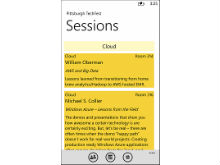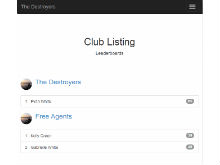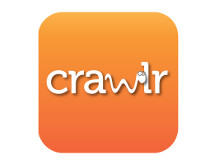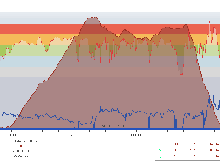My Card

- NameEvan White
- BirthdayJuly 1982
- AddressVancouver, WA, United States
- Phone+1 (607) 301 0201
- Emailkindasimple@gmail.com
- Websitekindasimplesolutions.com
My Skills
Productive Languages
- C#
- JavaScript
Familiar Languages
- SQL
- VB
- JAVA
- Python
- PHP
- R
Platforms
- Microsoft Store
- Cordova
- Node.js
- Android
- iOS
Javascript Frameworks
- Backbone.js
- jQuery
- React.js
User Interface
- XAML
- HTML/CSS
Tooling
- Git
- Visual Studio
- Jenkins CI
- MSBuild
- Gulp, Webpack
- Bash
Database
- SQL Server
- Microsoft Access
About Me
Hi, My name is Evan
I have working in native mobile development space writing javascript and .NET applications. I have been a developer at Microsoft shops for 12 years being a generalist across the web and mobile stack. I'm motivated to use best practices, collaborate, and improve.
Employment
Mobile Developer2014 - Present
Mocaworks, LLC
Developing cross-platform Javascript/HTML5 Cordova application for mobile access to learning management service.
Windows Mobile Developer2010 - 2013
AccuWeather.com
Developing Windows 8 and Windows Phone apps. Managing software requirements, administering source control repositories, and configuring and maintaining build machines.
ASP.NET Web Developer2007-2010
Sikorsky Global Helicopters
Create and maintain web applications that improve existing business processes supporting Lean manufacturing using MS SQL Server, MS Access, ASP.NET and Microsoft Excel. Provide ad-hoc data analysis and continual improvement of IT process and service. Participated in SAP ERP implementation.
Programmer2004-2006
LC Consulting Services
Created and administered classic ASP websites driven by MySQL and MS Access databases. Designed, tested, and maintained software for engineering applications. Produced MFC applications, libraries, and websites.
Continuing Education
MOOC Programs
Coursera
Data analysis in R, Machine Learning, Mobile Robot Control Systems
Information Technology Management
Elmira College
Courses in Project Management, Leadership, IT Management
Spanish
Corning Community College
A semester of study (for fun!) courses in Spanish, ASL, Mandarin Chinese, Guitar, Percussion, General Music
Language, Music
Monroe Community College
A semester of study (for fun!) courses in Spanish, ASL, Mandarin Chinese, Guitar, Percussion, General Music
Education
B.S. Computer Science
Union College
Graduated Cum Laude with Psychology Minor.
Calories are a garbage system
Thats just one bit of wisdom shared at the nutritional clinic I attended at The Fitness Circuit. They wisely provided notepads which is the reason why I still have something to record here. Most of what I heard was already familiar, but a great reminder of changes that I have yet to implement. So here were the major points
Calories: A good ratio for sources of calories to keep is the zone diet’s 40 carb : 30 protein : 30 fat. Bodybuilders preach a 50 protein : 30 carb : 20 fat, which is not necessarily bad.
Composition: Its a good idea to vary food at mealtime to try to eat complete proteins. Combining an apple with almonds is an example. Rice and beans is another.
Timing: Its best to let digestion finish, between meals (3-4 hours). That way, enzymes are ready to be reused.
Toxicity: Toxins can be stored in fat as a way of elimination. The body will fight to keep the fat there until the source of the toxins is eliminated.
Exercise: Varied exercise is good. When time is limited, circuit training is ideal.
Calories: If planning to lose fat and counting calories, aim for a 500 calorie/day reduction. 500 calories * 7 days = 3500 calories = 1lb fat. A healthy diet could be about 1800 calories of good food. Its been offered that if you eat 35 grams of fiber at a sitting, you can eat what you want and maintain your weight because you will be full before eating too much of the bad stuff. Overall, calories are an imperfect system for assessing the metabolic energy of food, and shouldn’t be relied on heavily.
Diet: A caveman diet is a good idea. Nuts, veggies, fruit, occasionally meat. Cavemen didn’t bake bread, so stay away. A foods pyramid would prioritize foods in order of diminishing value Vegetables (fresh, frozen, canned), Fruit, Unprocessed starches (corn, carrot, rice, potato), Healthy grains, Raw Nuts/Seeds, Animal meets
Cholesterol: Levels are more of a feedback loop than anything else. They indicate an issue with nutrition. A secondary symptom. Acidic blood causes buffering (e.g. calcium leeching for dairy). Eating alkaline foods makes blood more basic.
Tips: Make junkfood a destination event. That way its not in the house, is more of a conscious decision, and is enjoyed more.
Cook in bulk. Some ideas are chicken, royal red beans, rice, sweet potatoes,
Have a free day, then go back to diet.
Mindset: put diet in the context of goals. When considering the big picture, the path is more clear. Have goals, write them down in the positive and in the past tense as if achieved (e.g. “I am glad that I can not do 100 pushups”).











